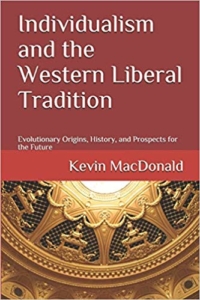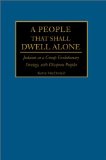The Forgotten Jewish Origins of the Anti-Woke Crusade
Long before “wokeness” became a culture war buzzword, a cohort of Jewish thinkers who had come of age as socialists, Trotskyists, and New Deal liberals began warning about identity politics, racial grievance, and threats to Israel. As the radicalism of the 1960s engulfed American politics, these figures became what we might now call the original anti-woke activists.
Norman Podhoretz, editor of Commentary from 1960 to 1995, embodied this transformation. Early on, he moved comfortably in liberal circles and even flirted with sympathy for the New Left. By the late 1960s, however, he underwent what he later described as a political “conversion experience,” emerging by 1970 as an unapologetic neoconservative. His critique of the radical Left was withering. He accused it of following “the route of personal grievance” instead of “the route of ideas” and of describing middle-class American values “in terms that are drenched in an arrogant contempt for the lives of millions and millions of people.”
Podhoretz’s shift was not purely ideological. It exposed deeper racial anxieties and a fraught relationship with America’s upheavals over race. Long before his full turn to neoconservatism, he wrote one of the most explosive essays of the decade, “My Negro Problem—And Ours,” which appeared in Commentary in 1963 and stunned readers with its brutal candor.
In that piece, Podhoretz admitted to “the hatred I still feel for Negroes,” yet proposed interracial marriage as the ultimate solution to racism. “I cannot see how [the dream of erasing color consciousness] will ever be realized unless color does in fact disappear,” he wrote. “And that means not integration, it means assimilation, it means—let the brutal word come out—miscegenation.” He pushed further, insisting that “the wholesale merging of the two races is the most desirable alternative for everyone concerned,” and that only the physical erasure of racial difference through intermarriage could resolve the “Negro problem.”
This episode foreshadowed his later disillusionment with the Left. As the civil rights movement gave way to Black Power and campus radicals who were increasingly hostile to Israel, Podhoretz came to view the New Left not as an ally but as an existential rival. Reflecting on that era in the Claremont Review of Books, he observed that “the enemy of the New Left was not the Right. The Right didn’t exist for the New Left. It wasn’t on the radar. It was so self-evidently bad. They didn’t have to waste any energy on it. No, the enemy was the liberal community.”
If Podhoretz supplied the tone and the cultural venom, Irving Kristol supplied the architecture. Often described by the New York Times as the godfather of neoconservatism, Kristol began, as he later recalled in a PBS interview, as a Trotskyist at City College of New York in the late 1930s, part of a famous milieu bound together less by devotion to socialism than by hatred for Stalin and the Soviet betrayal of the socialist ideal.
After World War II, he evolved into a Cold War liberal, co-founding the London-based journal Encounter in 1953 to promote an Atlanticist, anti-Communist vision; its rise and later scandal have been chronicled in obituaries such as The Guardian’s appraisal. By the mid-1960s, Kristol remained a Democrat but was increasingly skeptical of the Great Society and the utopian social engineering it promised. With Daniel Bell, he launched The Public Interest in 1965 as a journal for reform-minded liberals wary of technocratic hubris and unintended consequences.
The New Left’s surge, with its anti-Americanism, moral relativism, and emerging hostility to Israel, pushed Kristol further right. He saw in the counterculture a sign of cultural and civilizational decay. By the 1972 McGovern campaign, he had concluded that, as one left-wing critic later put it in Jacobin, the Democratic Party had been captured by its radical fringe. Kristol openly aligned with the conservative movement, praising Nixon’s law-and-order pragmatism.
Kristol’s thinking was also shaped by the German-Jewish political philosopher Leo Strauss, whose work on classical political philosophy and modern nihilism was popularized in venues like Cato’s overview of Straussian influence. For Kristol, politics became the art of the possible, grounded in moral tradition rather than abstract egalitarian ideals. His journey—from Trotskyist to liberal to conservative—came to be summed up in the famous line explored at VoegelinView: “a neoconservative is a liberal who has been mugged by reality.”
If Podhoretz and Kristol provided the intellectual spine, Sidney Hook represented the embattled academic conscience. Once a Marxist and Communist sympathizer in the 1930s, Hook became by the 1960s one of the New Left’s fiercest critics. As Jewish historian Edward Shapiro recalled in a piece for the National Association of Scholars, Hook was horrified when “groups of violent anti-Vietnam War radicals and racist demagogues, urged on by sympathetic faculty, occupied campus buildings, trashed faculty offices, and intimidated spineless administrators.” For anyone watching the campus pro-Palestine protests of 2023-2024, the echoes are unmistakable. The barricades, moral fervor, and denunciations echo the 1960s, when Jewish political actors first discovered how easily their own revolutions could turn against them.
Midge Decter, often described as the “godmother of neoconservatism,” followed a path akin to Podhoretz and Kristol. She began as a liberal Democrat deeply embedded in New York’s Jewish intellectual scene, but recoiled in the 1960s from what she later denounced, in a Jerusalem Post interview, as the Left’s “heedless and mindless politics and intellectual and artistic nihilism.”
The New Left’s radicalism, sexual liberation, and what she saw as a national “seizure of self-hatred” convinced her, as summarized in a National Humanities Medal citation, that America was spiraling into moral decay. By the 1970s she had become a leading critic of feminism, the counterculture, and gay liberation. In one widely cited formulation, reported in an Associated Press obituary, Decter argued that feminism aimed to keep adult women “as unformed, as able to act without genuine consequence, as the little girl she imagines she once was and longs to continue to be.”
Taken together, these figures were reacting to the same combustible mix: the rise of the New Left and Black Power, the spread of the counterculture, and the eventual fallout from the Arab-Israeli wars, which helped nudge segments of Black America toward sympathy for the Palestinian cause. Their response was to abandon the Left and remake American conservatism in their Judaic image.
The consequences of the Jewish neoconservative ideological conquest still shape American politics today. From it emerged an “invade the world, invite the world” order in which American power is spent advancing Jewish interests abroad while immigration policy at home enriches plutocrats and erodes the country’s European demographic core.





Leave a Reply
Want to join the discussion?Feel free to contribute!